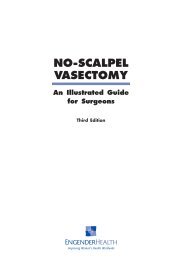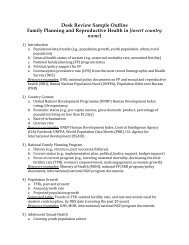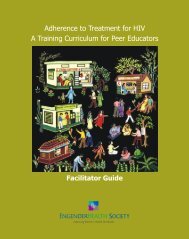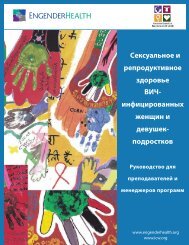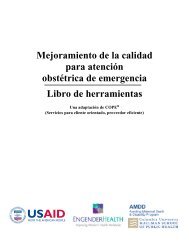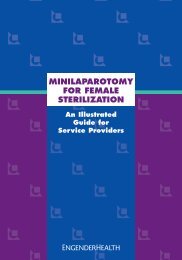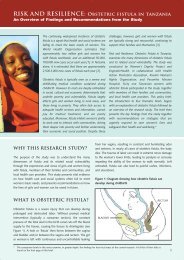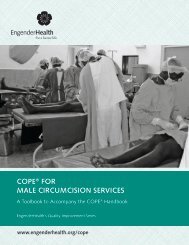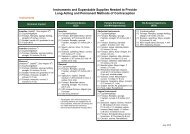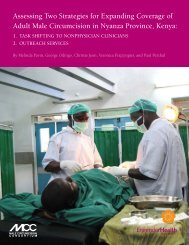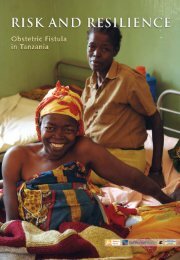Help-Seeking Pathways and Barriers for ... - EngenderHealth
Help-Seeking Pathways and Barriers for ... - EngenderHealth
Help-Seeking Pathways and Barriers for ... - EngenderHealth
Create successful ePaper yourself
Turn your PDF publications into a flip-book with our unique Google optimized e-Paper software.
In contrast, younger women appear to experience support <strong>and</strong> encouragement to seek help<br />
from their cohort of friends.<br />
There is a difference in seeking help between a woman who is 17 years old <strong>and</strong> one who<br />
is 60 years old. A 17 year-old woman who experiences an act like this [violence from her<br />
partner] will feel very bad, <strong>and</strong> because she has many friends who are young they will<br />
advise her to go to several places to get help.<br />
Female PFG participant (18-24 years old), Iringa<br />
Options <strong>for</strong> unmarried women are restricted<br />
For unmarried girls, the available options are even more restricted given that the<br />
relationship is not <strong>for</strong>mally recognized. Should a survivor in this situation disclose an<br />
incidence of GBV, she risks stigmatization, which rein<strong>for</strong>ces the tendency to refrain from<br />
help-seeking. The following quote suggests that even seeking support from family or elders<br />
in the community may not be a viable option <strong>for</strong> unmarried survivors.<br />
When you have a girlfriend, it means you are not married <strong>and</strong> hence you cannot call any<br />
elders, because your relationship is not official. No parents of any side know of your<br />
relationship officially.<br />
Male PFG participant (18-24 years old), Mbeya<br />
3. Differences in <strong>Help</strong>-<strong>Seeking</strong> Based on Type of Violence<br />
Overall, there was a high degree of consistency across the “<strong>Pathways</strong> to <strong>Help</strong>-<strong>Seeking</strong>”<br />
maps, even when two hypothetical scenarios—domestic violence <strong>and</strong> rape by a stranger—<br />
were considered. This is noteworthy especially in light of the finding that rape by a stranger<br />
was consistently identified as an “unacceptable” act of GBV, while most types of physical<br />
<strong>and</strong> sexual violence within relationships were considered “acceptable” (see Part III<br />
Section A). However, several important distinctions did emerge as described below.<br />
Physical violence by a husb<strong>and</strong><br />
In the maps depicting responses to spousal violence, there was a clear emphasis on<br />
reconciliation. Participants’ comments indicated that help is generally sought only in<br />
extreme cases resulting in injuries or after frequent episodes of violence. <strong>Help</strong>-seeking<br />
pathways also differed significantly based on the age of the survivor. Older women were<br />
characterized as more likely to “keep quiet” <strong>and</strong> “not attract the attention of providers.”<br />
Participants often explained this pattern as older women being “accustomed to” violence.<br />
Since an old woman had already been with her husb<strong>and</strong> many years, reporting violence<br />
would also be a poor reflection of her. In contrast, comments suggest that a younger<br />
woman would be more likely to pursue <strong>for</strong>mal help-seeking, <strong>and</strong> potentially even attempt to<br />
prosecute her husb<strong>and</strong>.<br />
<strong>Help</strong>-<strong>Seeking</strong> <strong>Pathways</strong> <strong>and</strong> <strong>Barriers</strong> <strong>for</strong> Survivors of GBV in Tanzania March 2013<br />
Page 36



